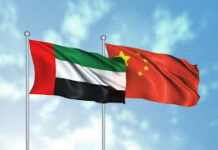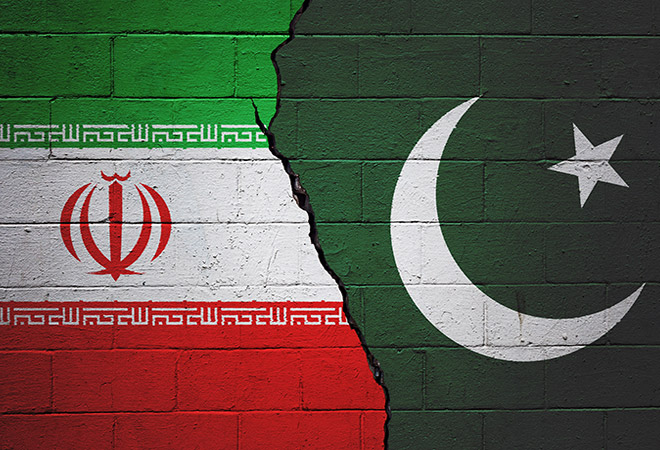“Economics has gained the title Queen of the Social Sciences by choosing solved political problems as its domain.”
― Daron Acemoglu, Why Nations Fail: The Origins of Power, Prosperity, and Poverty
South Asia has always remained the centre of conflicts and political agitation, and the jewel of world politics. There are multiple reasons for it occupying centrestage, such as exquisite geographical location, vast economic opportunities, and cultural diversity. Angus Madison, world famous economist, mentioned in his book Monitoring the World Economy that only India produced 24 percent of world food around 1600, and then depletion of economic opportunities started in South Asia caught in a spiral of chaos, especially after the arrival of British. Shashi Tharogr in An Era of Darkness has stated that “In short, British rule suffered several man-made famines, wars, racism, maladministration, deportation of its people to distant lands and economic exploitation on an unprecedented scale. After the economic genocide, and use of social, cultural, and political opportunities by Britain in South Asia, two new nations ere allowed to emerge on world map, India and Pakistan.
Since Independence, both nations have been in a scuffle, despite having cultural, geographical, and linguistic commonalties. Three major wars have so far been fought between two South Asian Giants and only poverty, hunger, and chaos have won in this region. Things became more tense after India repealed Article 370 in its Constitution, but latest developments have raised new hopes of peace and prosperity.
In the last week of February, the Director Generals of Military Operations (DGMOs) of both sides came into contact and agreed to strictly follow the ceasefire agreement of 2003, and meanwhile the USA welcomed this peace gesture. General Bajwa’s recent encouraging statement to bury the past and move forward with neighbors indicated that a new era of peace is knocking at our door. Indian Prime Minister Narendra Modi showed sympathies with his Pakistani counterpart after his Covid-19 test came out positive. These recent developments are showing that the ice is going to melt soon and both nations should not spoil this imperative opportunity. Covid-19 has badly damaged the economy of both countries. Pakistan’s annual economic growth rate has shrunk from 5.8 percent in 2018 (when Imran Khan took over as prime minister) to 0.98 percent in 2020 and could decline further. Additionally, it remained on the Financial Action Task Force’s “grey list” for terror financing. India’s GDP on the other hand, contracted by an astounding 23.9 percent in the first quarter of 2020 and only now seems to be on the mend.
Both countries have been facing immense difficulties since Independence, but their governments are more rapidly spending on defense than human development. The Stockholm International Peace Research Institute (SIPRI) said in its annual report last year, India had the world’s third biggest military budget last year, behind the USA and China. India’s military spending of $71 billion was 6.8 percent higher than its 2018 expenditure. It grew by 259 percent over a 30-year period stretching from 1990 to 2019 and by 37 percent over the 2010-19 decade. About Pakistan, the SIPRI report said its military expenditure had gone up by 70 per cent during the 2010-19 decade to reach $10.3 bllion. In terms of GDP, the military budget rose from 3.4 percent in 2010 to four percent last year.
Considering that any escalation in tensions between India and Pakistan can threaten regional peace and stability, it is imperative both countries find ways to peacefully resolve their disputes and establish new channels of communication.
But the dismal picture of human development on both sides is actually a challenge to improve bilateral ties and work on human betterment. The two have massive potential to create trade and economic opportunities. According to a 2018 World Bank report, India-Pakistan trade has the potential to increase from $2 billion to $37 billion, if both countries become willing to take steps towards removing tariff and non-tariff barriers such as: sensitive lists, strict visa policies, strict quality standards and lengthy procedures and waiting periods at the border. Prior to August 2019, when Pakistan formally suspended trade ties with India after India revoked Kashmir’s special status, formal trade between the two was estimated at $2 billion— with bilateral trade through formal channels. Pakistan’s exports to India include vegetable products, textiles, dry dates, rock salt, cement, leather, surgical instruments, carpets, and gypsum. India’s to Pakistan consist of cotton, organic chemicals, dyes and pigments, machinery, pharmaceutical items, teas and spices, iron and steel and plastic goods. Informal trade between the two also takes place through smuggling via land borders or third countries, such as Thailand, the UAE, and Singapore. From 2012-2013 informal trade between was reported at $3.9 billion— almost double formal trade. Informal trade further increases when formal trade is suspended.
Obstacles to India and Pakistan trade consist of both tariff and non-tariff barriers, including but not limited to strict quality standards, sensitive lists (goods on which no tariff concessions are granted), lengthy procedures, waiting periods at the border, strict visa policies, and lack of proper infrastructure such as roads, dry ports, and rail cargo stations to facilitate trade. These factors combined increase both the absolute and relative costs of trade. For example, goods often must wait several days at the border checkposts before they are cleared. If the goods are perishables, this means they are essentially destroyed before getting to the market.
These barriers are also aggravated by the trust deficit on both sides. For example, some in the Pakistan business community oppose free trade with India, arguing that India’s larger economy would negatively impact the demand for Pakistani goods in the domestic market compared with cheaper Indian products (considering that trade with India has historically been in favor of India). However, this argument overlooks the broader advantages of improving trade. For instance, Pakistan can import automobile parts from India at a comparatively cheaper price than from the EU, Japan, or the UAE. This would make Pakistani automobiles cheaper for domestic consumers, hence increasing their sales. Beyond the economic impact, trade has the potential to act as a confidence building measure between the two countries by forming established channels of communication. As asserted by a few international relations theorists, as countries build economic cooperation and interdependence, they also significantly reduce their chances of going to war as the cost of going to war means forgoing economic benefits. The EU in the aftermath of the First and Second World Wars is a compelling example of trade liberalization and regional cooperation that has stabilized a continent after years of conflict.
Enhancing economic cooperation and regional trade would leave both India and Pakistan with an opportunity to divert their enormous defense budgets towards pressing issues, such as: access to health services, free education, and reduction of food security, which are important for the poor populations within each country. Opening formal channels of trade would further streamline informal trade and reduce smuggling, which has the potential to lead to increased government revenue through customs duties. Similarly, Pakistan can charge transit fees by providing access to Indian goods to Afghanistan through Pakistan. Furthermore, regional trade also has the potential to create jobs and promotes economic growth and development. At a time where each country’s economy is shrinking due to covid-19, enhancing bilateral trade can help in creating demand for exports and help reinvigorate economic growth.
The populations of India and Pakistan share culture, language, and history, which can significantly help in enhancing trade, tourism, and investment between the two countries if people-to-people contact is encouraged to foster trust and greater economic interdependence. The opening of Kartarpur corridor in 2019 was a positive step in this direction, and many other opportunities are available, opening the door for potential economic integration by enhancing people-to-people contact. Although just a first step, the Kartarpur corridor is a positive development in minimizing the trust deficit between the two countries and could further contribute to other confidence building measures such as enhancing cooperation in trade. Considering that any escalation in tensions between India and Pakistan can threaten regional peace and stability, it is imperative both countries find ways to peacefully resolve their disputes and establish new channels of communication.























Very well summed up. A compelling case to initiate peace in the region.
Pipe dream. India will not give up Kashmir. And Pakistan will not stop sending terrorists because her army is too weak to take on Indian might. Nothing will change.